 Lauren Peacher
Lauren Peacher Samantha Mariko
Samantha Mariko Nhi Py
Nhi Py Joana Gröblinghoff
Joana Gröblinghoff Luci Matheus
Luci Matheus
On the 10th of august, the State Reserve Auction started. At the beginning, the spinners showed great interests in bidding, giving fairly high prices. However, later in the week, the bidding prices went back to normal level. Until the 13th, a total of 59622 tons, which takes 10% of the planned cotton output has been sold out.
The average price is 18186 yuan per ton, while the price transformed to 328 is 18385 yuan per ton.As the sales of cotton is calculated using net weight this time, the price comes out a little bit lower than the China Cotton Index (328). The holding of cotton reserve auction has stopped the cotton price from falling down from last week as the price rose up on thursday and friday, but there were only a few transactions.At the end of last week, CC Index 328 was 18139 yuan per ton, with a decrease of 40 yuan per ton. National e-trade organisations and the futures market presented a high level of performance as a result of an increase of all contracts.
A unique LV concept store with the area of about 2000 square meters will be launched in Hangzhou, Zhejiang province in 2011.
Within one year, LV has opened 3 stores in Hangzhou, which are all located in downtowns. After LV, Gucci, Catier, Dior and Hermes and so on all will open their second or third stores in Hangzhou.
The third LV store is at Hubin International Boutique Compound, which is famous for having numerous luxury brands. It is known that this LV store is a unique concept store with VIP crush-room. At this room, VIPs can enjoy the beautiful scene of West Lake. LVMH will invest 240 million Yuan at this store.
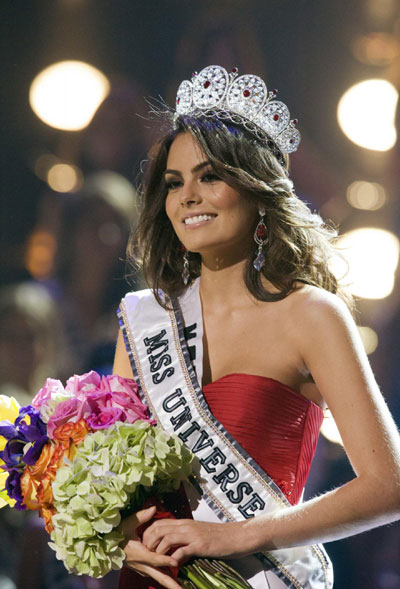
Miss Mexico Jimena Navarrete, of Guadalajara, stands after being crowned Miss Universe 2010 during the Miss Universe pageant at the Mandalay Bay Events Center in Las Vegas, Nevada August 23, 2010.
A 22-year-old Mexico woman has won the Miss Universe pageant after donning a flowing red gown and telling an audience it's important to teach kids family values.
Jimena Navarrete of Guadalajara was first to answer an interview question Monday night and the last of 83 contestants standing in the headline-grabbing pageant on the Las Vegas Strip.
Her one-strap gown flowed behind her like a sheet as she walked. Earlier, she smiled in a violet bikini as she confidently strutted across the stage.
Asked by Olympic gold-medal figure skater Evan Lysacek how she felt about unsupervised Internet use, Navarrete said the Internet is important but parents need to be careful and watch over their kids.
"I do believe that Internet is an indispensable, necessary tool for the present time," she said through an interpreter. "We must be sure to teach them the values that we learned as a family."
First runner-up was Miss Jamaica Yendi Phillipps, while second runner-up was Miss Australia Jesinta Campbell.
Navarrete is Mexico's second Miss Universe; Lupita Jones of Mexico won the title in 1991. Navarrete replaces Miss Universe 2009 Stefania Fernandez of Venezuela.
Navarrete's win thwarted Miss Venezuela Marelisa Gibson from giving the South American country a third consecutive win. Neither Gibson nor Miss USA Rima Fakih made the top 15 finalists.
Navarrete won a package of prizes including an undisclosed salary, a luxury New York apartment with living expenses, a one-year scholarship to the New York Film Academy with housing after her reign, plus jewelry, clothes and shoes fit for a beauty champion.
Campbell won the Miss Congeniality Universe award. Miss Thailand Fonthip Watcharatrakul won Miss Photogenic Universe and a second award for having the best national costume.
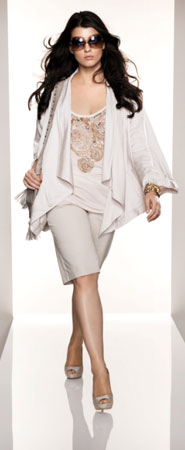
Evans SS10 Collection
"Style is not a size but an attitude?" Big Beauty blogger comments as she announced her S/S 2010 collection for Taillissime plus-size line at La Redoute. A 45 per cent rise in UK women's plus-size clothing sales in just five years has attracted worldwide attention for retailers like OneStopPlus.com and Evans and equally led top designers, like Marc Jacobs to respond to this demand.
By acknowledging the fact that more than four in 10 people in the UK (according to a recent Mintel Report) complained that plus-size clothes are less fashionable, OneStopPlus.com, the world's top plus-size retailer, announced on Tuesday their launch onto the runway at NY Fall Fashion Week.
September 15 will see the first ever plus-size-only runway show with famed curvy models flaunting the Spring 2011 fashions hosted by plus-size icon Emme, the new ambassador to OneStopPlus.com, a brand under the Redcats USA umbrella who recorded 3,386 million Euros in turnover last year.
UK's Arcadia brand Evans equally aims to celebrate different shapes offering clothes with uncompromising style. Their latest campaign stars Crystal Renn who appeared on the catwalk for Jean Paul Gaultier, and launched a book, aptly named Hungry .
Stephanie Sobel, President of OneStopPlus.com says, "Top plus-size models like Crystal Renn and Lizzie Miller in Italian Vogue, French Elle, Glamour, Marie Claire, and others, validate that this is the magic moment for plus sizes."
Gary Dakin VicePresident of Ford Models in the US says that it is supermodels like Crystal that will "knock down the final barriers?" to make the fashion industry take note, size doesn't matter. Evans has proved this with the recent launch of the Beth Ditto collection.
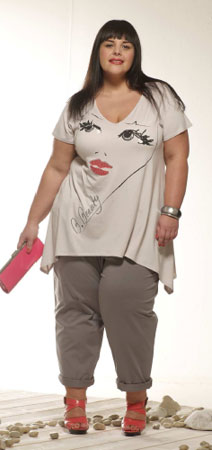
This industry is no longer niche but a mass market worth ?.8 billion this year. Larger-size menswear has also grown steadily ?up six per cent to ?.9 billion since 2005.
Ready-to-wear brand Marc Jacobs recently announced the need for a plus-size line to provide sizes in UK 14, US 10 (Euro 42). If designer Marc and brand's president Robert's plans are successful, experts say they could capture a huge untapped market.
Obesity health issues are fuelling the lucrative market despite efforts from numerous celebrities who have publicly battled with weight loss. Today, the most purchased women's clothing size in the UK is size 12, at 31 per cent, followed by size 14. 
Evans SS10 Collection
"Style is not a size but an attitude?" Big Beauty blogger comments as she announced her S/S 2010 collection for Taillissime plus-size line at La Redoute. A 45 per cent rise in UK women's plus-size clothing sales in just five years has attracted worldwide attention for retailers like OneStopPlus.com and Evans and equally led top designers, like Marc Jacobs to respond to this demand.
By acknowledging the fact that more than four in 10 people in the UK (according to a recent Mintel Report) complained that plus-size clothes are less fashionable, OneStopPlus.com, the world's top plus-size retailer, announced on Tuesday their launch onto the runway at NY Fall Fashion Week.
September 15 will see the first ever plus-size-only runway show with famed curvy models flaunting the Spring 2011 fashions hosted by plus-size icon Emme, the new ambassador to OneStopPlus.com, a brand under the Redcats USA umbrella who recorded 3,386 million Euros in turnover last year.
UK's Arcadia brand Evans equally aims to celebrate different shapes offering clothes with uncompromising style. Their latest campaign stars Crystal Renn who appeared on the catwalk for Jean Paul Gaultier, and launched a book, aptly named Hungry .
Stephanie Sobel, President of OneStopPlus.com says, "Top plus-size models like Crystal Renn and Lizzie Miller in Italian Vogue, French Elle, Glamour, Marie Claire, and others, validate that this is the magic moment for plus sizes."
Gary Dakin VicePresident of Ford Models in the US says that it is supermodels like Crystal that will "knock down the final barriers?" to make the fashion industry take note, size doesn't matter. Evans has proved this with the recent launch of the Beth Ditto collection.

This industry is no longer niche but a mass market worth ?.8 billion this year. Larger-size menswear has also grown steadily ?up six per cent to ?.9 billion since 2005.
Ready-to-wear brand Marc Jacobs recently announced the need for a plus-size line to provide sizes in UK 14, US 10 (Euro 42). If designer Marc and brand's president Robert's plans are successful, experts say they could capture a huge untapped market.
Obesity health issues are fuelling the lucrative market despite efforts from numerous celebrities who have publicly battled with weight loss. Today, the most purchased women's clothing size in the UK is size 12, at 31 per cent, followed by size 14.
Former Miss Universe Australian Jennifer Hawkins presents creations for Myer during the Sydney Fashion Festival at Sydney Town Hall August 24, 2010. The Sydney Fashion Festival runs until August 28.
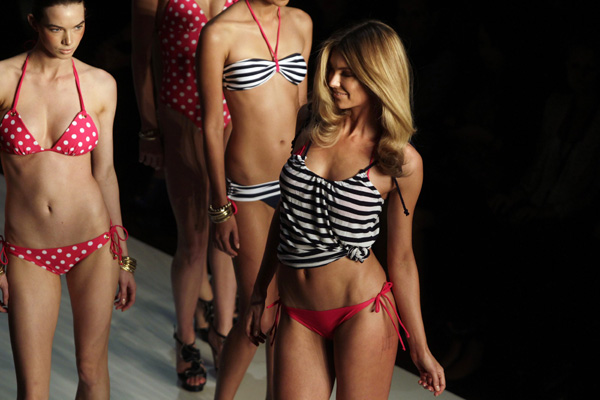
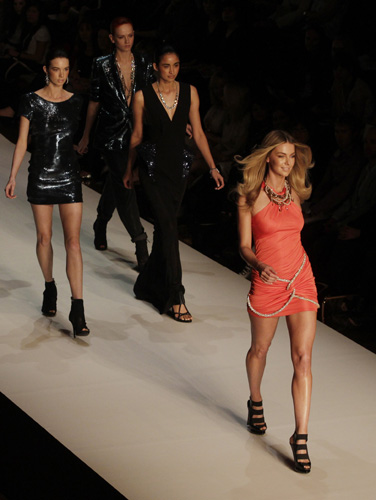
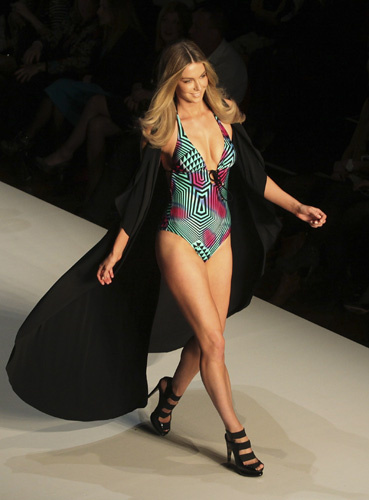
 The Department of Agriculture's Commodity Credit Corporation announced a special import quota for upland cotton that permits importation of a quantity of upland cotton equal to one week’s domestic mill use. The quota will be established on August 26, 2010, allowing importation of 14,717,826 kilograms (67,598 bales) of upland cotton.
The Department of Agriculture's Commodity Credit Corporation announced a special import quota for upland cotton that permits importation of a quantity of upland cotton equal to one week’s domestic mill use. The quota will be established on August 26, 2010, allowing importation of 14,717,826 kilograms (67,598 bales) of upland cotton.
This action is being carried out under the authority of PL 110-246, enacted June 18, 2008, which requires that a special import quota be determined and announced immediately if, for any consecutive 4-week period, the U.S. Far East price exceeds the prevailing world market price. This condition was met during the consecutive 4-week period ending.
Quota number 101 will be established as of August 26, 2010, and will apply to upland cotton purchased not later than November 23, 2010, and entered into the U.S. not later than February 21, 2011. The quota is equivalent to one week's consumption of cotton by domestic mills at the seasonally-adjusted average rate for the period April 2010 through June 2010, the most recent three months for which data are available.
Announced quota is established under Presidential Proclamation 6301 dated June 7, 1991, and Presidential Proclamation 6948 dated Oct. 29, 1996, and will be referenced as the Secretary of Agriculture’s Special Cotton Import Quota Announcement Number 101, in chapter 99, subchapter III, subheading 9903.52.101 of the HTS.
The quota is not divided by staple length or by country of origin, and does not apply to Extra Long Staple (ELS) cotton. The quota identifies a quantity of imports that is not subject to the over quota tariff rate of a tariff rate quota. The quota does not affect existing tariff rates or phytosanitary regulations. Future quotas, in addition to the quantity announced, will be established if price conditions warrant.
Today, the Government of India extended incentives amounting to Rs 10.52 billion to exporters, mainly for labour intensive sectors like leather, handicrafts and textiles.
These sops will help these industries to survive through the still-fragile global economic recovery.
The benefits which have been extended are through the various schemes like DEPB, under which taxes are reimbursed to exporters, subsidized interest and incentives for import of capital goods.
However the government made it clear that this would be the last time that incentives would be available on the DEPB scheme and it would not be extended again, since it is against WTO rules.
Handloom, handicrafts, carpet and SMEs have been availing the facility of two percent interest subvention scheme, now additional products from sectors like leather, textiles, engineering, and jute have also been added to the scheme.
The zero-duty Export Promotion Capital Goods (EPCG) scheme too has been extended by a period of one year to March 31, 2012, which was originally set to expire on March 31, 2011.
Transactions costs were a bane for exporters and which totaled to around 7-8 percent of the export value. Steps to reduce these costs too were announced, which has been welcomed by one and all.
Girls present creations made from recycled materials during a children models competition in Nanning, capital of southwest China's Guangxi Zhuang Autonomous Region, Aug. 22, 2010.
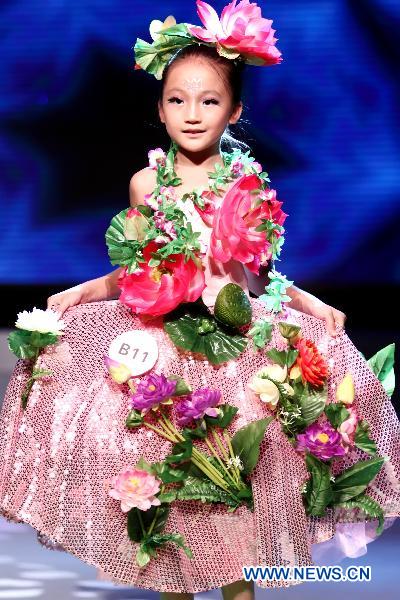
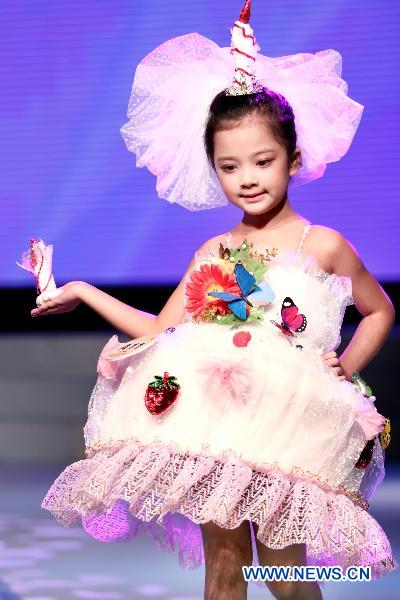
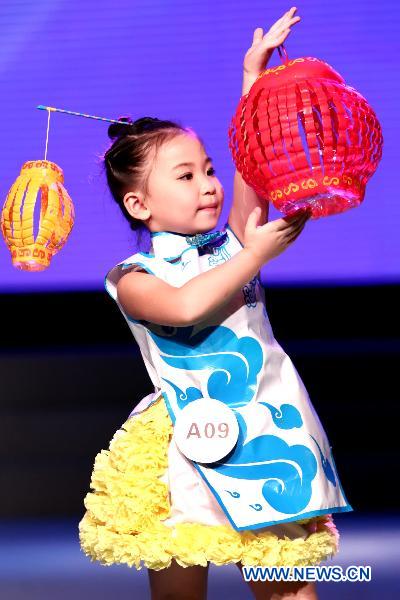

Prices hit a record high
In Jun. 2010, China Cotton Index for 328-Grade reached CNY 17,894 a ton, adding 19.84% over Jan. 2010. Same happened to the international cotton prices. The Cotlook A index in Jun. reached to 93.04 cents per pound, up 51.53 points from last year. The both of them hit a record high.
Industry recovery pushing up cotton price
Cotton prices extended gains over the past few months, as incremental domestic demand was outpacing incremental supply. China's cotton textile industry saw a continue increase in cotton yarn production in the first half of 2010. Looking further, from January to June, output of cotton yarn and cotton blend yarn reached 9.7192 million and 1.2414 million tons, up 15.84% and 13.71% respectively from the previous year's period.
There are other factors pushing up cotton prices. Cotton output in China totaled 6.40 million tons in 2009/10, down 14.67% from a year earlier. The harvest was approaching its end, but some growers and traders were still reluctant to sell due to expectations that prices will rise further.
The supply is not only from domestic cotton mills but also from outside. High import costs may push up cotton price also. China??s State Council has upped the first half 2010 import quota to 3.562 million tons. As we known, imports of cotton under quotas are subject to 1% customs duty rate. Imports without quotas are subject to 5~40% sliding duties. Goods delivered for cotton exports surged 109.84 per cent to 1.5451 million tons in the first six months from the year-earlier period. Goods delivered for cotton exports in Jun. increased by 5.1 per cent to 177,200 tons. Export price surged 47% to $1,834/ton in Jun.
Prices began easing
China Cotton Index for 328-grade began easing since Jul. 12 as the slack season for yarn sales coming up and the releasing of government reserved cotton. On Aug. 6, China Cotton Index for 328-Grade was CNY 18178 a ton, 241 less than the price on Jul. 9. China will auction 600,000 metric tons of cotton from state reserves from Aug. 10 to satisfy demand and stabilize the market, the China Cotton Association said.
Global production rebounds on price rise
Global cotton production is forecast at 25.2 million tons in 2010/11, up by 15% from 2009/10. Farmers have reacted to the jump in cotton prices in 2009/10 by significantly expanding their plantings in 2010, according to International Cotton Advisory Committee. The average yield is expected to improve slightly to 766 kg/ha. The rebound in production is driven by the United States, where output is anticipated to jump by over 50% to 4.1 million tons. Larger crops are also expected in India, Pakistan, China, Brazil, Uzbekistan, Turkey, Australia, the CFA Zone, and many other countries.
Output in India and Pakistan is forecast to rise 6.4 percent and 6.3 percent to 5.4 and 2.2 million tons, respectively, according to the USDA. People are also watching if India and Pakistan, the world's second- and fourth-largest producers, will be able to deliver their estimated output.
World cotton mill use is projected to continue to recover in 2010/11, growing by 2% to 24.9 million tons, pushed by continued improvement in global economic growth. China and India are expected to account for 80% of the increase in world cotton mill use in 2010/11. Global imports are expected to continue to recover in 2010/11, rising by 4% to 8 million tons. This increase will be driven by Chinese imports, forecast 22% larger at 2.9 million tons. U.S. exports are projected up by 19% to 3.2 million tons in 2010/11, whereas Indian exports could decline to 1.2 million tons due to a reduced exportable surplus. As world cotton production is expected to exceed mill use in 2010/11, world ending stocks are forecast to rise by 3% to 9.8 million tons. The global stocks-to-use ratio is expected to remain stable at 39%, much lower than the recent five-year average of 49% (2004/05 to 2008/09).
The ICAC Price Model forecasts a 2010/11 season-average Cotlook A Index of 85 cents per pound. The 95% confidence interval extends from 71 to 102 cents per pound. This forecast implies a 9% increase with respect to the 2009/10 average. However, caution must be exercised since all commodity markets are subject to great uncertainty.
Outlook
According to data collected from 11,773 statistics-worthy Chinese cotton spinning enterprises surveyed by National Bureau of Statistics of China, from January to May 2010, main business income of the industry increased by 29.2 per cent to 447.13 billion yuan; total profits jumped 75 per cent to 20.66 billion yuan; goods delivered surged 29.2 per cent to 36.04 billion yuan. During Jan.-May period, enterprises in cotton spinning sector saw their ratio of profit growth edged up by 4.62% year on year, 0.2% higher than the average level of the whole textile industry. The growth was attributed to an increase in domestic sales and market confidence.
However, cotton prices have been increasing at an unprecedented level in China. Prices have been going up internationally as well. Cotton spinning mills face a challenging environment in high purchasing prices with stockpiles falling where it may be difficult to pass higher material costs on to higher yarn prices.
Ministry of Industry and Information Technology published a list of obsolete companies on August 8th who are required to shut down by the end of Spet. The list involoved 18 industries and 2087 companies. 201 of them are dyeing and printing companies; 25 chemical fiber manufacturers.
The major obsolete companies in 2010 invloved in the following industries: cement, 762 companies; paper-making, 279; dyeing & printing, 201; coke, 192; iron-making, 175; iro alloy, 143; tanning, 84. Divided by regions: Henan, 230 companies; Shanxi, 226; Zhejiang 180; Hebei, 165; Yunan, 165; Guizhou, 128.
Relating to textile industry, 3.82 billion meters?? dyeing production capacity need to shut down, as well as 674,000 tons chemical fiber??s production capacity. Zhejiang ranked No. 1 in the shut-down mission as 2.15 billion meters dyeing fabrics and 241,000 tons chemical fiber, accounting for 56% and 35% of total amount.
Henan need to shut down 500 million meters dyeing fabrics production capacity, ranking No. 2. Jiangsu, Shandong, Fujian, Hebei and Guangdong all need to shut down at least 100 million meters.
For the chemical fiber, Jiangsu need to shut down 165,000 tons; followed by Sichuan, Henan, Fujian, Shanxi, Liaoning, Shandong, Hebei and Xinjiang. They all need to shut down at least 10,000 tons.